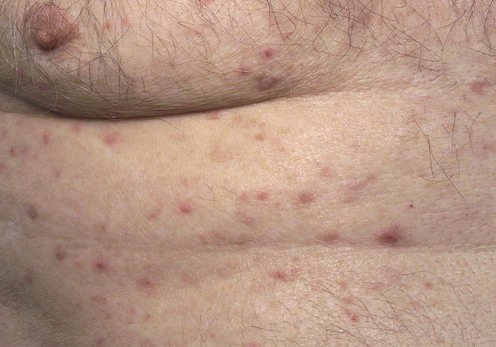French LE, Piletta PA, Etienne A, Salomon D, Saurat JH. Dermatology 1999; 198: 410–1.
Transient acantholytic dermatosis (Grover disease)

First-line therapies
Incidence of transient acantholytic dermatosis (Grover’s disease) in a hospital setting.
![]()
Stay updated, free articles. Join our Telegram channel

Full access? Get Clinical Tree




 Emollients
Emollients Avoid heat/sweating
Avoid heat/sweating Topical corticosteroids
Topical corticosteroids Antihistamines
Antihistamines